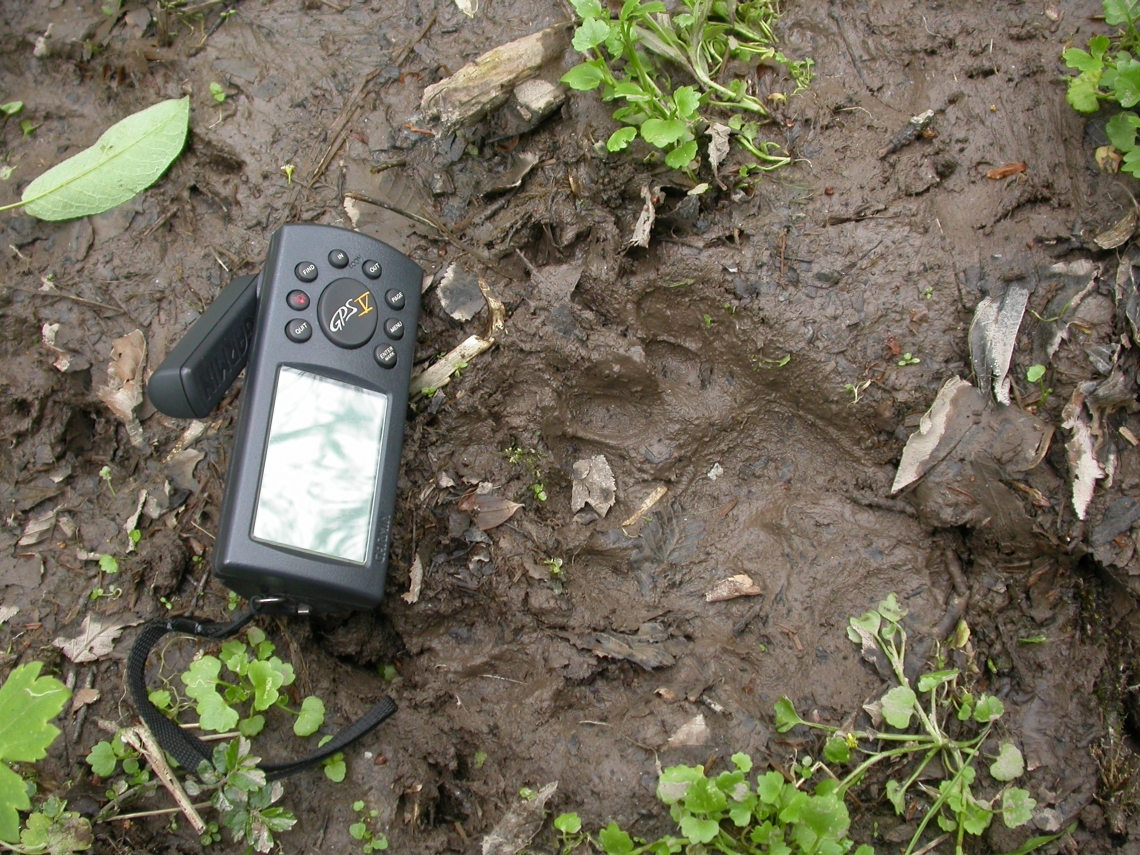Causes of mortality: Direct human-caused mortality is not currently a significant problem for this species, although the historical loss of habitat to forest conversion was the driving cause of previous population decline. There is minimal human–panda conflict, as giant pandas do not typically depredate livestock or raid crops. Poaching of giant pandas is rare due to the threat of very strict punishment. Causes of mortality are not well understood, but are attributed to natural sources in most cases.

Giant panda_A melanoleuca_Foping NR_cub mortality due to maternal abandonment and flooded cave den_IOZCAS
Population estimation methods: The primary method for estimating giant panda population size has been through systematic transect surveys to find their feces (scats). The Chinese government has conducted range-wide panda surveys at ~10 year intervals. The most recent survey, completed in 2014, covered 4.36 million ha, utilizing the labor of more than 2,000 workers who spent more than 60,000 person-days, making this one of the largest efforts to estimate a worldwide population for any animal species. Whereas the Chinese government refers to the survey as a census (total count), it is actually an estimate, although lacking an estimate of error (confidence intervals).
These surveys assume that at least one feces from every individual panda was found, and that all of them were correctly distinguished to individual animal. Giant pandas bite off bits of bamboo in a highly repetitive manner, and thereby develop a feeding style that varies somewhat among individuals, producing feces that contain fragments of bamboo that are relatively consistent for an individual, but more variable across individuals. This, and home range characteristics, are used to distinguish how many individuals are represented in the fecal collection. Molecular techniques have been employed for individual identification in some reserves, and they are generally in rough agreement with the “bite-size” estimates, though the DNA-derived estimates tend to be higher, indicating that the real panda population is somewhat higher than the current estimate.

Giant panda_A melanoleuca_Foping NR_difficult to detect in bamboo habitat_San Diego Zoo Wildlife Alliance

Giant panda_A melanoleuca_Liangshan Mountains_field team during survey of isolated population_Fang Wang

Giant panda_A melanoleuca_Foping NR_feces used in national survey to estimate population size_San Diego Zoo Wildlife Alliance

Giant panda_A melanoleuca_Niuweihe NR_population estimation based on bite size in feces_Fang Wang

Giant panda_A melanoleuca_Wolong NR_distinctive feeding sign_Sheng Li

Giant panda_A melanoleuca_Wolong NR_track in mud_Sheng Li
Local population estimates: China’s 4th National Survey estimated giant panda density to be 7.2 individuals per 100 km2, although density is variable across its range.
Country and global population estimates: The most recent (2014) estimate of the global population of giant pandas is 1,864, all in China. Clearly this estimate is not accurate to a single individual, so more realistically there are roughly 2,000 giant pandas in the wild (excluding cubs <2 years old).
Population trends: Overall, the population of giant pandas has been gradually increasing since about the 1990s. A primary cause of population increase is increased habitat, enabling range expansion. However, some populations are declining, especially in the southern portion of the range where populations are more fragmented and have higher levels of human disturbance.